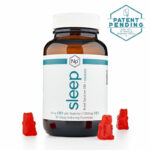If you’re one of the millions of women who experience debilitating menstrual cramps each month, you’ve likely searched for relief beyond traditional pain medications. The emergence of CBD products for menstrual cramps as a natural alternative has caught the attention of both researchers and women seeking effective pain management solutions. Recent studies suggest that cannabidiol (CBD) may offer significant relief for period pain, with some women reporting reduced cramping intensity and decreased reliance on conventional painkillers.
This comprehensive guide will explore the science behind using CBD for menstrual cramps, examine the latest research findings, and provide practical guidance on incorporating CBD into your menstrual care routine. We’ll also discuss how CBD helps PMS symptoms beyond just physical pain, covering the mechanisms that make this cannabinoid particularly promising for women’s health issues.
Whether you’re new to CBD or considering it as part of your menstrual wellness strategy, you’ll discover evidence-based information to make informed decisions about this emerging therapeutic option.
Understanding Menstrual Cramps and Their Impact
Menstrual cramps, medically known as dysmenorrhea, affect up to 90% of women of reproductive age. These painful uterine contractions occur when the uterus sheds its lining during menstruation, often causing intense cramping that can interfere with daily activities, work, and overall quality of life.
The primary culprit behind menstrual pain is prostaglandins—hormone-like substances that trigger inflammation and uterine muscle contractions. Higher levels of prostaglandins correlate with more severe cramping, explaining why some women experience debilitating pain while others have minimal discomfort.
Traditional treatments typically include over-the-counter pain relievers like ibuprofen or naproxen, which work by blocking prostaglandin production. However, these medications can cause gastrointestinal issues, kidney problems, and other side effects with long-term use, leading many women to seek alternative approaches.
The Science Behind CBD for Menstrual Pain Relief
Recent research has revealed promising insights into how CBD for menstrual cramps works within the body’s natural systems. A 2024 survey-based study assessed the use of a high-CBD vaginal suppository for menstrual-related pain, finding that the CBD group demonstrated significantly reduced frequency of pain compared to standard treatment approaches.
The endocannabinoid system (ECS) plays a crucial role in pain modulation, inflammation control, and reproductive function. This system consists of cannabinoid receptors (CB1 and CB2), endogenous cannabinoids produced by the body, and enzymes that regulate their breakdown. The endocannabinoid system is involved in a host of homeostatic and physiologic functions, including modulation of pain and inflammation.
CBD interacts with the ECS by influencing these receptors and enhancing the activity of naturally occurring endocannabinoids like anandamide. This interaction helps regulate pain perception, reduce inflammation, and promote muscle relaxation—all factors that can contribute to menstrual cramp relief.
How CBD Affects Uterine Contractions
The uterus contains abundant cannabinoid receptors, particularly CB1 receptors, which respond to both endogenous cannabinoids and plant-derived CBD. When CBD binds to these receptors, it can help relax smooth muscle tissue, potentially reducing the intensity of uterine contractions that cause cramping.
Additionally, CBD’s anti-inflammatory properties may help reduce the production of prostaglandins, addressing one of the root causes of menstrual pain. This dual mechanism—muscle relaxation and inflammation reduction—makes CBD particularly suitable for addressing menstrual discomfort.
CBD Helps PMS: Beyond Physical Pain Relief
While much attention focuses on CBD for menstrual cramps, the compound’s benefits extend to broader premenstrual syndrome (PMS) symptoms. CBD can help with anxiety and mood swings, irritability, and low resilience, while both CBD and THC can help relax the uterine muscle where cramping occurs.
PMS encompasses a wide range of physical and emotional symptoms that occur in the days leading up to menstruation. These include mood swings, anxiety, depression, bloating, breast tenderness, headaches, and sleep disturbances. The interconnected nature of these symptoms suggests that the endocannabinoid system’s regulatory role extends beyond pain management.

Mood and Anxiety Regulation
CBD interacts with the body’s endocannabinoid system and helps balance the important hormones and chemical messengers in the brain that exacerbate PMS on an emotional level. This interaction occurs through multiple pathways, including serotonin receptors that influence mood regulation.
The compound’s anxiolytic (anti-anxiety) properties stem from its ability to modulate neurotransmitter activity, particularly serotonin and GABA systems. For women experiencing PMS-related anxiety, irritability, or mood instability, CBD may offer a natural way to maintain emotional balance during hormonal fluctuations.
Sleep Quality Improvement
Many women report sleep disturbances during their menstrual cycle, whether from physical discomfort or hormonal changes affecting circadian rhythms. CBD’s calming effects can promote better sleep quality by reducing anxiety and pain that might otherwise interfere with rest.
CBD for Sleep by New Phase Blends
Type: CBD Starter Kit Bundle
Includes: Tincture, Balm, and Gummies
Features: You create your own kit with your custom product choices
Type: CBD gummies for sleep
CBD: 45mg per gummy
Features: Free Shipping, Money Back Guarantee
Type: CBD Oil For Sleep
CBD: 66mg per serving
Features: Free shipping, money back guarantee
Improved sleep quality has cascading benefits for overall PMS symptom management, as adequate rest supports hormone balance, pain tolerance, and emotional regulation.
Different Forms of CBD for Menstrual Relief
The method of CBD administration can significantly impact its effectiveness for menstrual symptoms. Each delivery method offers distinct advantages depending on your specific needs and preferences.
Topical Applications
CBD-infused topical products like creams, balms, and suppositories provide localized relief directly to the pelvic area. These products work by penetrating the skin and interacting with local cannabinoid receptors without entering the bloodstream significantly.
Vaginal suppositories, in particular, have shown promise in recent research. A survey-based study published in 2024 explored the use of cannabidiol (CBD) in vaginal suppositories, showing that this method of delivery helped with pain relief and minimized the need for traditional pain medication.
The advantage of topical applications is targeted relief with minimal systemic effects, making them suitable for women who want localized pain management without the potential cognitive effects associated with other cannabinoids.
Oral CBD Products
CBD oils, tinctures, capsules, and edibles provide systemic relief that can address both physical and emotional PMS symptoms. These products typically take 30 minutes to 2 hours to take effect but offer longer-lasting relief compared to topical applications.
Sublingual tinctures (drops placed under the tongue) offer faster absorption than capsules or edibles, with effects typically beginning within 15-30 minutes. This delivery method provides good bioavailability while allowing for precise dosing.
Type: Pure CBD Gummies
CBD: 45mg Per Gummy
Features: Free Shipping, Money Back Guarantee
Inhalation Methods
Vaping or smoking CBD provides the fastest onset of effects, typically within minutes. However, this method offers shorter duration of relief and may not be suitable for everyone due to respiratory considerations.
For acute pain management during severe cramping episodes, inhalation methods can provide rapid relief that bridges the gap until longer-acting products take effect.
Dosage Guidelines and Safety Considerations
Determining the appropriate CBD dosage for menstrual cramps requires careful consideration of individual factors including body weight, symptom severity, product potency, and delivery method. Starting with the lowest effective dose and gradually increasing as needed remains the safest approach.
Starting Dosage Recommendations
For beginners, starting with 5-10mg of CBD daily is generally recommended, taken consistently for at least a week to assess tolerance and effectiveness. Many women find that taking CBD throughout their cycle, rather than only during menstruation, provides better overall symptom management.
For topical products, apply a small amount to the lower abdomen or back initially, increasing coverage area as needed. Suppositories typically contain higher concentrations (25-100mg) but provide localized effects.
Timing Your CBD Intake
Some women benefit from beginning CBD supplementation a few days before expected menstruation to build up the compound’s effects in their system. Others prefer to use CBD only during active symptoms.
For PMS symptoms, starting CBD during the luteal phase (approximately 10-14 days before menstruation) may help address mood and physical symptoms before they become severe.
Important Safety Considerations
While CBD is generally well-tolerated, certain precautions should be observed. CBD can interact with medications metabolized by the liver’s cytochrome P450 enzyme system, potentially affecting the effectiveness of birth control pills, blood thinners, and certain antidepressants.
Pregnant and breastfeeding women should avoid CBD products due to limited safety data. Additionally, individuals taking multiple medications should consult healthcare providers before adding CBD to their routine.
Quality control varies significantly among CBD products, making it essential to choose reputable brands that provide third-party lab testing results showing cannabinoid content and absence of contaminants like pesticides, heavy metals, and residual solvents.
Potential Side Effects and Interactions
While CBD is generally considered safe, some users may experience mild side effects, particularly when starting supplementation or using higher doses. Understanding these potential effects helps ensure safe and effective use.
Common side effects include drowsiness, dry mouth, changes in appetite, and mild gastrointestinal upset. These effects are typically mild and often diminish as the body adjusts to CBD supplementation.
More concerning are potential drug interactions. CBD inhibits certain liver enzymes responsible for metabolizing many medications, potentially increasing or decreasing their effectiveness. This is particularly relevant for women taking hormonal contraceptives, as CBD might theoretically affect hormone levels, though research in this area remains limited.
Comparing CBD to Traditional Pain Management
Traditional menstrual pain management typically relies on nonsteroidal anti-inflammatory drugs (NSAIDs) like ibuprofen, which work by blocking prostaglandin production. While effective for many women, these medications can cause stomach irritation, kidney problems, and cardiovascular risks with long-term use.
CBD offers a different approach by working with the body’s natural endocannabinoid system rather than simply blocking pain signals. This mechanism may provide more comprehensive relief by addressing inflammation, muscle tension, and associated mood symptoms simultaneously.
However, it’s important to note that research on CBD for menstrual pain is still emerging, while NSAIDs have decades of clinical data supporting their effectiveness. The choice between these approaches should consider individual health factors, symptom severity, and personal preferences regarding natural versus pharmaceutical interventions.
Research Limitations and Future Directions
Current research on CBD for menstrual cramps shows promise but remains limited. Most studies involve small sample sizes, survey-based data, or focus on cannabis products containing both CBD and THC rather than pure CBD.
A 2024 study tested a CBD-infused tampon for its effects on menstrual pain relief, with participants reporting reduced pain levels, especially during the early days of their menstrual cycle. While encouraging, more rigorous clinical trials are needed to establish definitive efficacy and optimal dosing protocols.
Future research directions include larger randomized controlled trials, investigation of different CBD formulations and delivery methods, and exploration of CBD’s effects on specific menstrual disorders like endometriosis and PMDD (premenstrual dysphoric disorder).
Making Informed Decisions About CBD for Menstrual Health
The decision to use CBD for menstrual cramps should be based on careful consideration of individual needs, current health status, and available evidence. While research suggests potential benefits, CBD is not a cure-all solution, and individual responses can vary significantly.
Consider consulting with healthcare providers, particularly if you take medications, have underlying health conditions, or experience severe menstrual symptoms that might indicate underlying disorders requiring medical evaluation. A healthcare provider can help determine whether CBD is appropriate for your specific situation and guide you toward safe, effective use.
Document your experience with CBD, noting dosage, timing, effects, and any side effects. This information helps optimize your approach and provides valuable data for healthcare consultations.
Conclusion
CBD for menstrual cramps represents a promising natural approach to managing period pain and associated PMS symptoms. Current research suggests that CBD’s interaction with the endocannabinoid system can provide meaningful relief through multiple mechanisms, including pain reduction, inflammation control, and mood stabilization.
While more research is needed to establish definitive guidelines, the available evidence indicates that CBD helps PMS symptoms beyond just physical pain, offering a more comprehensive approach to menstrual wellness. The variety of available products—from topical applications to oral supplements—allows for personalized approaches based on individual needs and preferences.
As with any wellness intervention, success with CBD for menstrual health requires patience, careful attention to dosing, and realistic expectations. The compound works best as part of a comprehensive approach to menstrual wellness that may include stress management, regular exercise, adequate sleep, and proper nutrition.
The growing body of research, combined with anecdotal reports from women worldwide, suggests that CBD may offer a valuable tool for managing menstrual discomfort naturally. As our understanding of the endocannabinoid system continues to evolve, CBD’s role in women’s health will likely become even clearer, potentially offering new hope for the millions of women seeking effective, natural menstrual pain relief.















